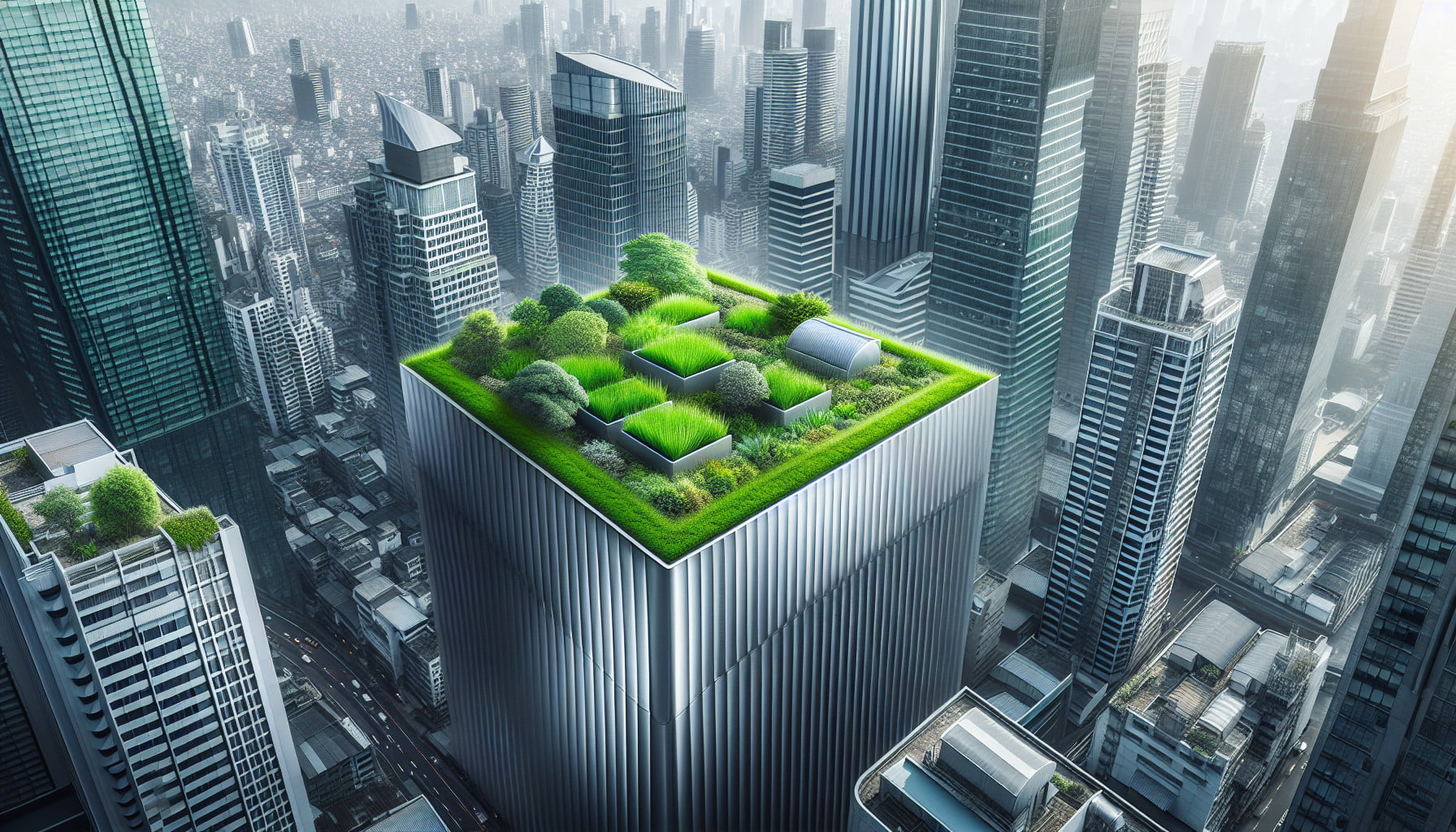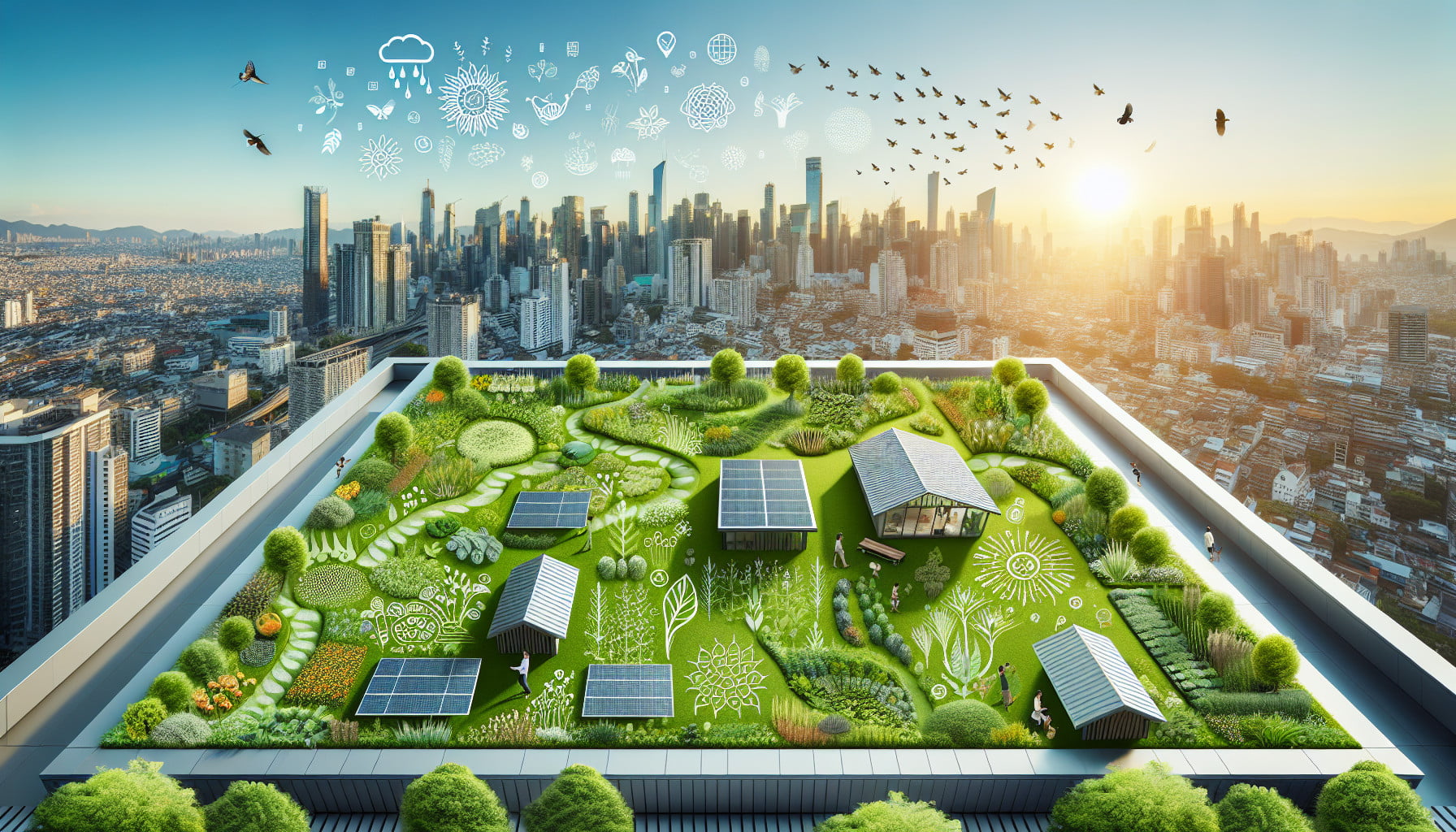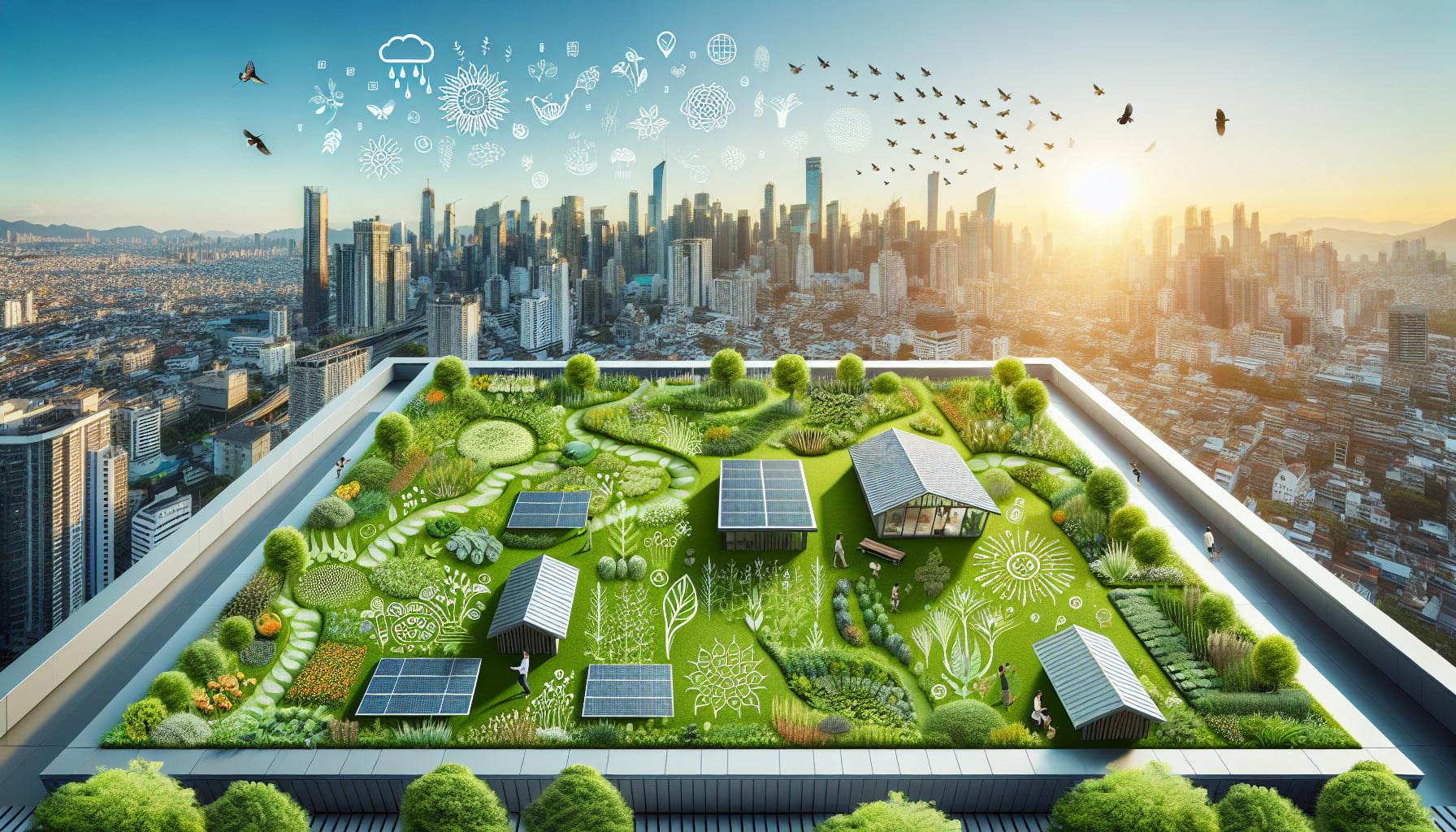You’re about to discover how incorporating green roof technologies can have a positive impact on the air quality around you. With pollution levels on the rise, it has become crucial to find innovative solutions that can combat this growing problem. In this article, we will explore five different ways in which green roof technologies can improve air quality and create a healthier environment for everyone. So, fasten your seatbelt and get ready to explore the amazing benefits of green roofs!

Reducing Air Pollution
Plant Selection
Plant selection plays a crucial role in reducing air pollution. By choosing appropriate plants for green roofs, you can effectively filter and purify the air in your environment. Certain plants, such as ferns and mosses, have excellent air filtering capabilities and can remove pollutants, including nitrogen dioxide and particulate matter, from the surrounding air. Additionally, selecting plants with dense foliage can create a barrier that traps airborne pollutants, preventing them from entering the atmosphere or being inhaled by humans.
Air Filtration
Green roofs act as natural air filters, helping to reduce air pollution. The plants on the roof intercept and capture airborne pollutants such as dust, pollen, and harmful gases, preventing them from being released into the atmosphere or entering buildings. The layers of soil and vegetation on green roofs provide an effective filtration system, allowing the roots to absorb and break down pollutants, while the soil particles capture and retain particles. This natural air filtration process significantly improves the quality of the air, making it cleaner and healthier for everyone.
Temperature Regulation
By reducing air pollution, green roofs also contribute to regulating temperature in urban environments. Air pollution is known to contribute to the Urban Heat Island effect, where cities experience higher temperatures due to the vast amount of concrete and asphalt surfaces that absorb and radiate heat. Green roofs help mitigate this effect by cooling the air through evaporation and transpiration processes. The plants on green roofs release moisture into the air, which cools the surrounding environment. Additionally, the vegetation acts as a thermal insulator, reducing heat transfer and keeping buildings and urban areas cooler.
Enhancing Oxygen Production
Increased Plant Biomass
Green roofs play a vital role in enhancing oxygen production. The increased biomass of plants on green roofs aids in the production of oxygen through photosynthesis. Photosynthesis is the process in which plants convert carbon dioxide into oxygen, using sunlight as the energy source. By increasing the amount of plant life on rooftops, green roofs contribute to higher levels of oxygen production, creating a healthier and more oxygen-rich atmosphere. This fresh supply of oxygen not only benefits humans but also supports the ecosystem by assisting in the survival of various organisms.
Photosynthetic Respiration
The process of photosynthetic respiration is another significant factor in enhancing oxygen production through green roofs. During photosynthesis, plants absorb carbon dioxide and release oxygen into the atmosphere. This exchange is crucial for maintaining a healthy balance of oxygen and carbon dioxide levels in the air. Green roofs, with their abundant plant life, increase the overall photosynthetic activity in urban areas, resulting in enhanced oxygen production and reduced carbon dioxide levels. This process has a positive impact on air quality, making green roofs an effective solution for improving the oxygen content in urban environments.
Reducing Heat Island Effect
Evapotranspiration
Green roofs play a significant role in reducing the Urban Heat Island effect through the process of evapotranspiration. Evapotranspiration is the combined process of evaporation from plants and transpiration from their leaves. Green roofs with a dense layer of vegetation release moisture into the air, which cools the surrounding environment. This cooling effect reduces the overall temperature in urban areas, helping to counteract the heat trapped by concrete and asphalt surfaces. By implementing green roofs, you can make a positive impact in mitigating the Urban Heat Island effect and create a cooler and more comfortable urban environment.
Shading Effect
Another way green roofs contribute to reducing the heat island effect is through their shading effect. The vegetation on green roofs provides shade to the roof surface, which helps to reduce the amount of heat absorbed by buildings. This shading effect not only keeps the rooftop temperature lower but also reduces the energy required for cooling buildings. By reducing the overall heat absorption in urban areas, green roofs can help alleviate the heat island effect, making cities more sustainable and comfortable places to live and work.
Capturing Carbon Dioxide
Photosynthesis
Green roofs have the remarkable ability to capture and store carbon dioxide through photosynthesis. As plants on green roofs absorb carbon dioxide from the atmosphere, they convert it into carbon compounds and release oxygen. By increasing the presence of green spaces in urban areas, green roofs contribute to reducing the concentration of carbon dioxide in the air, which is a major contributor to climate change. This natural process of capturing carbon dioxide helps in the fight against global warming and makes green roofs an effective tool for carbon offsetting.
Carbon Sequestration
In addition to capturing carbon dioxide through photosynthesis, green roofs also assist in carbon sequestration. Carbon sequestration is the process of capturing and storing carbon in long-term sinks, such as soil and vegetation. The layers of soil and vegetation on green roofs provide a significant carbon sink, effectively trapping carbon and preventing its release into the atmosphere. This helps reduce the overall carbon footprint of urban areas and contributes to combating climate change. By implementing green roofs, you can actively participate in the crucial process of carbon sequestration and make a positive impact on the environment.

Mitigating Urban Noise
Sound Absorption
Green roofs can act as effective sound absorbers, mitigating urban noise pollution. The layers of soil, vegetation, and air trapped within the green roof structure work together to absorb and dampen sound waves. The dense foliage of plants on green roofs serves as a physical barrier that obstructs noise from reaching the ground level. The various layers within the green roof system help to dissipate and absorb sound energy, reducing noise levels in surrounding areas. By implementing green roofs, you can create a quieter and more peaceful environment in urban settings.
Noise Reduction
In addition to sound absorption, green roofs also contribute to noise reduction in urban areas. The vegetation on green roofs acts as a natural barrier that reflects, scatters, and absorbs sound waves, effectively reducing their intensity. This noise reduction can be especially beneficial in densely populated areas with high levels of traffic or nearby construction. By installing green roofs, you can create a more tranquil and peaceful atmosphere, improving the overall quality of life for residents and workers in urban environments.
In conclusion, green roofs offer a multitude of benefits for improving the quality of urban environments. From reducing air pollution to enhancing oxygen production, mitigating the heat island effect, capturing carbon dioxide, and mitigating noise pollution, green roofs have a positive impact on various aspects of urban life. By implementing green roof technologies, you can actively contribute to creating healthier, more sustainable, and more pleasant urban spaces for everyone. So why not consider adopting this eco-friendly solution and reap the many benefits it has to offer?

